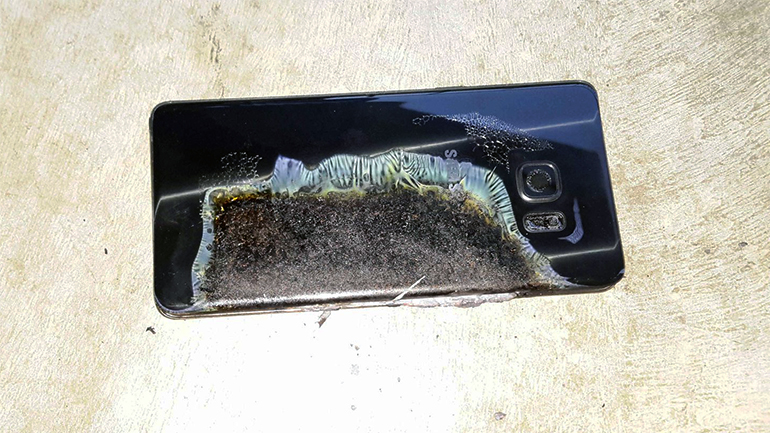For Samsung, the Galaxy Note still burns

Galaxy Note 7 destroyed by battery problems.
Months after Samsung pulled the ill-fated Galaxy Note 7 from the shelves, the company continues to feel the aftershocks of the device's fiery failure. The device's disappointment was hardly a fatal blow for Samsung's mobile business. Despite the effort and expense of tracking down every Note 7 it could find and remotely terminating the ones it couldn't, Samsung raked in record profit in the fourth quarter of 2016. The company is already gearing up for its next generation with the production of its next-generation 10-nanometer Exynos SoCs.
MWC 2022
However, at least until the company can restore the reputation of the Note with its next iteration, it continues to tend to fresh wounds.
On its way to becoming the world's premiere consumer electronics company, Samsung spent billions of dollars making sure its name was everywhere. As the Note's issues became part of the global conversation, however, Samsung received unwelcome mentions of its combustible communicator at the start of every U.S. flight and many international ones. The bad aftertaste of that publicity lingers. A 2015 Harris Poll ranked the company third in terms of reputation. That dropped to sixth in 2016. But Samsung's standing dropped precipitously this year to 49th place among the top 100 listed.
The company can take some solace in that its relatively rapid acknowledgement of and response to continued problems after switching battery suppliers prevented it from falling even further. Its announcement that the Note's 7 problems were caused by imprecisely fitting batteries followed an exhaustive investigation allowed Samsung to offer assurances regarding its ability to pinpoint a problem that had it flummoxed.
Best Android smartphones (February 2017)
To avoid future similar mishaps, Samsung detailed an eight-point battery safety plan and established a battery safety advisory group that includes independent and academic members. Still, Samsung led off its Mobile World Congress address with contrition, noting that it had failed to live up to the expectations that both it and its customers set for the mobile phone leader.
The Note 7's specter has had broader implications on Samsung's presence at the world's premiere mobile event, pushing back the debut of its next smartphone flagship and forcing it to focus on the sleepy category of tablets where the most ardent applause stemmed from the company including accessories such as pens and keyboards in the box. By the end of its event, however, Samsung had at least managed to change the battery narrative, talking instead about the long battery life on its new Windows devices as well as mentioning that its S Pen requires no battery at all.
Furthermore, Samsung's new battery safety emphasis has made what would be the sleeper issue of battery safety an opportunity for competitors. Chalk it up to what might otherwise be considered the LG G6's lack of breakthrough features or its addition of quick charging and wireless charging, but Samsung's longtime rival did not miss its chance to drive home its own battery safety messages. These have included optimizing space between the battery's anode versus cathode and exceeding international standards for hot box and nail penetration tests.
Cognizant that it had no phone announcement for a phone-centric show and determined not to let LG have the final word, Samsung closed its event by teasing its next event on March 29th at which the evolved form factor of the Galaxy S8 will certainly be announced. This will provide yet another opportunity for Samsung to bring its reassurances to another, U.S.-based, media audience. It could once again speak to how it has now implemented its battery safety program in its new device. Or it could simply entice consumers to move past the episode with a compelling new device. As the company noted at MWC, it must ultimately show progress with its actions, not words.
